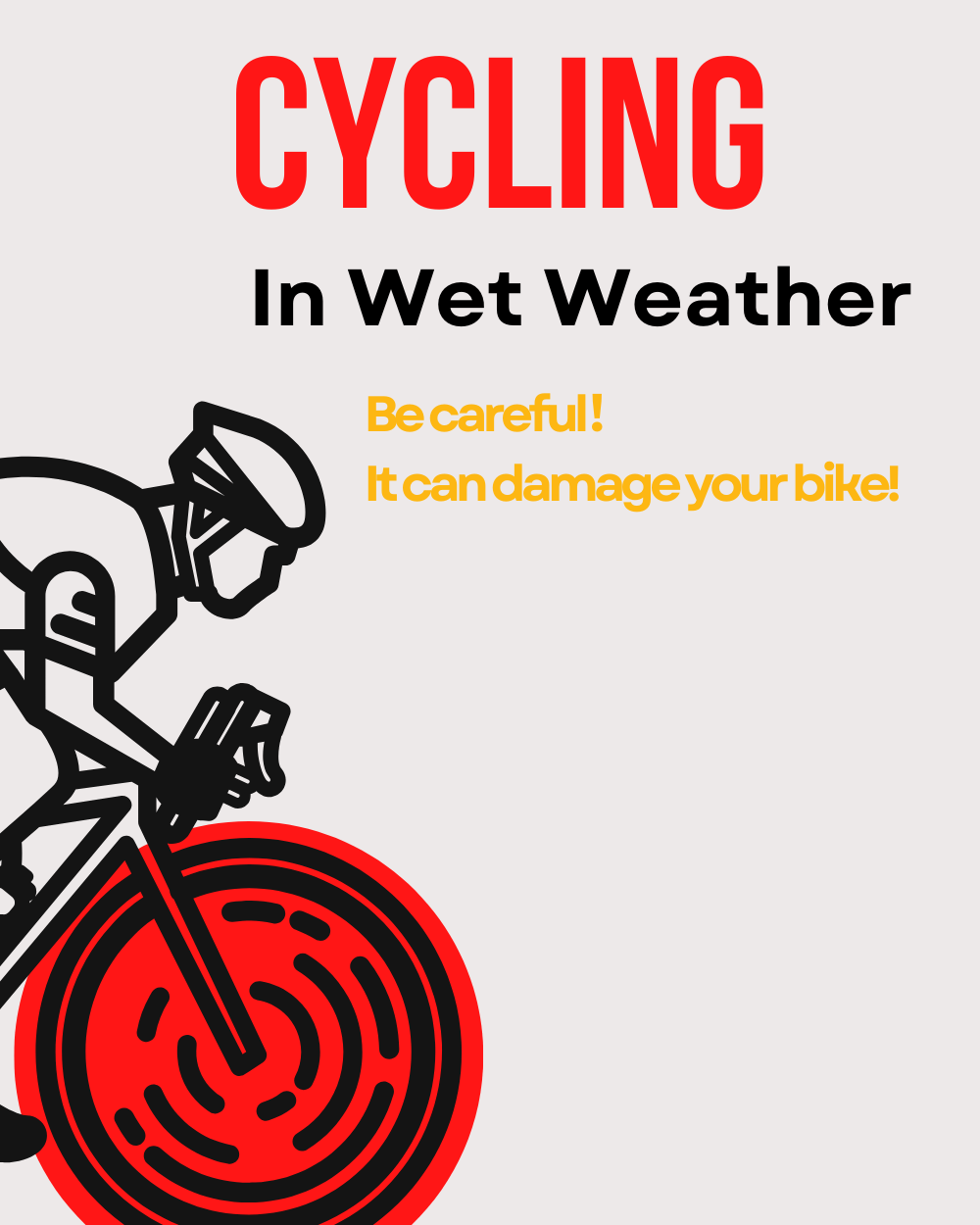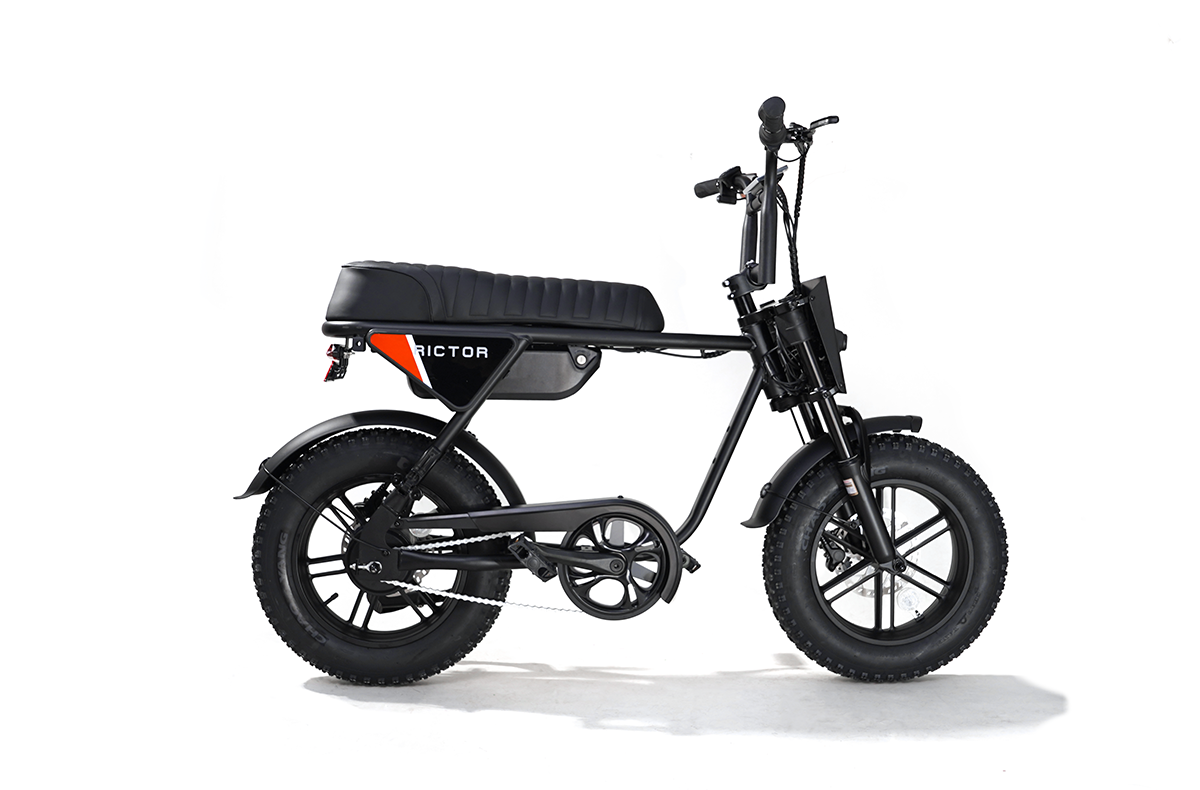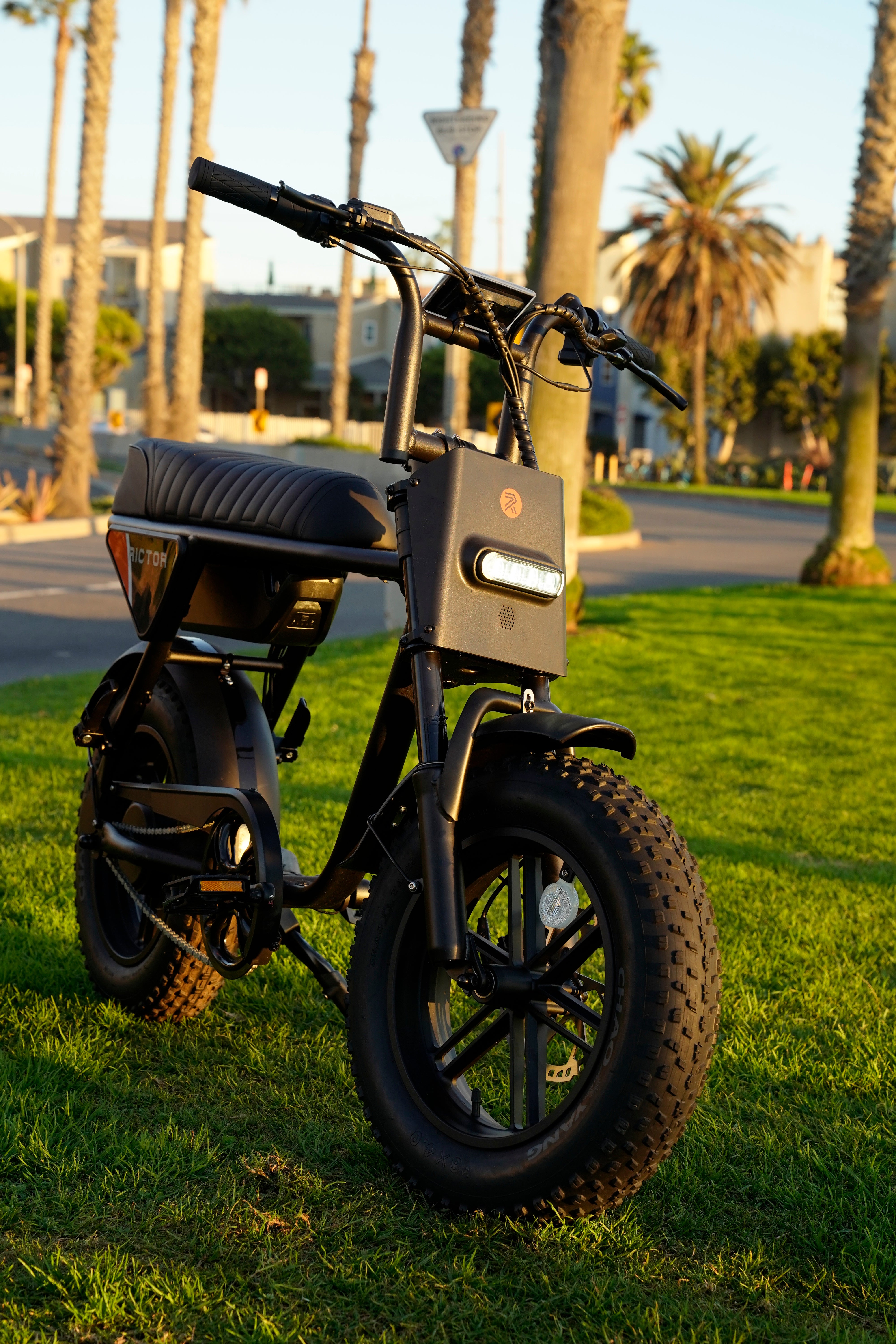
Riding in Wet Weather? Be careful, it can damage your bike!
Cycling in the rain is seldom an activity riders choose willingly. Yet, whether caught in an unexpected shower, braving the elements on a necessary commute, or sticking to a rigorous training schedule, we all end up riding in wet conditions sooner or later.
Although wet rides may not be the most anticipated part of our cycling experience, there are ways to make them more bearable and minimize the potential damage to our bikes.
Proper maintenance and care after riding in the rain are vital to preserving your bike’s functionality and longevity.
In this article, we will explore effective maintenance strategies and preventive measures to keep your electric bike in excellent condition, no matter how wet the weather gets.

The Impact of Rain on Your Bike
Rainwater, combined with dirt and salt from the roads, can lead to rust and corrosion on various bike components.
Key areas affected include chains and bearings, which are particularly susceptible to rust if not dried and lubricated promptly after exposure to moisture.
While many modern bikes use rust-resistant materials, older steel frames and forks can still corrode if left wet for prolonged periods.
Smaller components such as bolts and screws can rust, leading to difficult adjustments and replacements.
Water can wash away essential lubricants from your bike, resulting in increased friction.
Without adequate lubrication, components such as chains, derailleurs, and cables will experience increased friction, leading to faster wear and potential failure.
The absence of lubricants can cause components to grind against each other, accelerating wear and damage.
When dirt mixes with the grease on your bike, it forms a grind paste.
This abrasive substance can cause significant wear, acting like sandpaper and wearing down your drivetrain and other moving parts much faster than clean, dry conditions would.
A bike coated in this grime will not perform as smoothly or efficiently, affecting your overall riding experience.
Salt from winter roads can combine with water to create a highly corrosive mixture, leading to accelerated corrosion.
Both steel and aluminum parts are at risk, although aluminum is generally more resistant.
Salt can infiltrate bearings and other enclosed spaces, causing hidden damage that may not be immediately apparent.
SEE ALSO Should You Buy Ebike from Amazon? Not a Bad Idea, But I Will Choose RICTOR!
Essential Maintenance Tips for Wet Weather Cycling
Tip 1: Dry Your Bike Thoroughly
After every ride in the rain, make it a priority to dry your bike thoroughly.
Use a clean cloth to wipe down all components, paying special attention to the chain, gears, and brakes.
For a more thorough drying, use a leaf blower to remove moisture from hard-to-reach areas.
Tip 2: Regular Cleaning
Regular cleaning is crucial to prevent the buildup of dirt and grime.
Use mild soap and water to clean your bike, ensuring you remove all traces of dirt and salt.
A soft brush can help dislodge stubborn dirt from tight spaces.
Tip 3: Reapply Lubricants
Reapply lubricants to all moving parts to maintain smooth operation.
Use a wet lube designed for rainy conditions, as it will adhere better to your components and provide longer-lasting protection.
Ensure bearings and other critical parts are adequately greased to prevent water ingress and corrosion.
Tip 4: Regular Inspections
Regularly inspect your bike for signs of wear and damage. Look for signs of rust or wear on your chain and cogs.
Check brake pads and discs for wear and ensure they are free of contaminants. Inspect your frame and fork for any signs of corrosion or damage.

Preventive Measures for Long-Term Protection
Fenders are an excellent investment for wet weather cycling.
They reduce the amount of water and mud sprayed onto your bike and yourself.
By keeping more water off your bike, fenders help protect components from the corrosive effects of water and salt.
Proper storage can make a significant difference in your bike’s longevity.
Store your bike in a dry, sheltered environment to prevent rust and corrosion.
If indoor storage is not an option, use a waterproof cover to protect your bike from the elements.
Quality components are more resistant to the effects of wet weather.
Invest in parts made from stainless steel or aluminum, as they are more resistant to rust and corrosion.
Sealed bearings offer better protection against water ingress compared to open bearings.
Professional maintenance can help identify and address potential issues before they become serious.
Schedule regular servicing with a professional bike mechanic to keep your bike in top condition.
Best Waterproof Electric Bike
Are ebikes waterproof? The answer is a resounding yes, especially if you’re riding the RICTOR K1.
The RICTOR K1 is designed to handle wet conditions with ease.
The frame is made using liquid forging technology, which enhances its strength and durability.
The core components of the K1 boast an IPX7 waterproof rating, ensuring they remain unaffected by water exposure.
One of the standout features of the RICTOR K1 is its dual battery configuration. This allows the bike to be equipped with a second high-capacity 48V battery, providing extended range and reliable power for longer rides.
With this dual battery setup, the K1 can achieve a maximum range of up to 120 km, making it ideal for long-distance rides.
The batteries are powered by Samsung LG 21700 cells, known for their reliability and longevity.
Additionally, the batteries are removable, allowing for easy charging and replacement.
For smooth and efficient gear changes, the K1 is equipped with a Shimano 7-speed gearbox.
This gearbox significantly enhances transmission efficiency, making it perfect for daily commuting and varied terrain.
The Shimano system ensures that gear shifts are seamless and reliable, even in wet conditions, preventing any jamming or failure that could disrupt your ride.
Safety is paramount, and the K1 doesn’t disappoint with its front and rear hydraulic disc brake system.
The 180mm thickened and widened disc brake pads offer responsive and powerful braking, effectively shortening the stopping distance and improving overall safety.
Adding to its convenience and modern appeal, the K1 features a Bluetooth remote control key.
This allows for seamless, non-inductive unlocking, as well as remote control switching and unlocking via Bluetooth.
The 20-inch oversized inflatable tires are designed to provide excellent grip on various surfaces, including rain, snow, and gravel roads.
These high-performance road tires enhance stability and safety, making the K1 a reliable companion in all weather conditions.
The K1's tires are 20-inch fat tires, which offer better balance and stability due to their larger surface area.
The larger contact patch with the ground ensures a smoother ride, providing better grip and stability on uneven and slippery surfaces, which is particularly beneficial in wet conditions.
FAQs
What type of lubricant should I use for wet weather cycling?
Use a wet lube specifically designed for rainy conditions.
It adheres better to components and provides longer-lasting protection compared to dry lube.
How often should I clean my bike if I ride in the rain?
You should clean your bike after every ride in the rain to remove dirt, salt, and moisture that can cause corrosion and wear.
Are there any bike components that are more vulnerable to rain damage?
Chains, bearings, and steel parts are particularly vulnerable to rust and corrosion. Regular lubrication and drying can help protect these components.
💡 Explore More Here!
- Should You Buy Ebike from Amazon? Not a Bad Idea, But I Will Choose RICTOR!
- The RICTOR K1 is the BEST ALL AROUND EBike Under $2,500!
- Your handy checklist for buying a new e-bike, don't miss your best bike
- Quick Gearshift Tips! Easy Guide for Beginners on 7 Speed Bikes
- 2024 Electric Bicycle Pricing, don’t overpay on your next ride [+ Good Recommendation]



